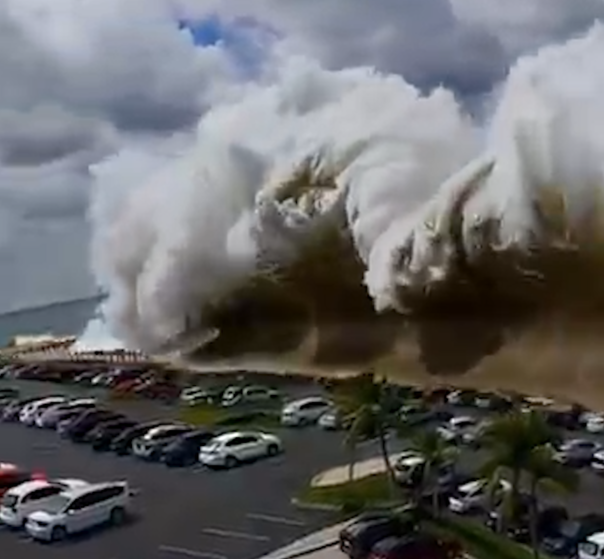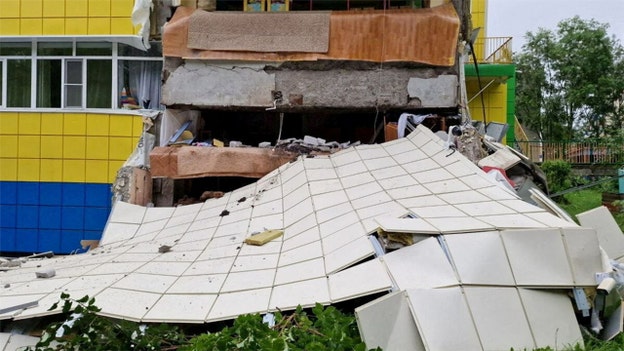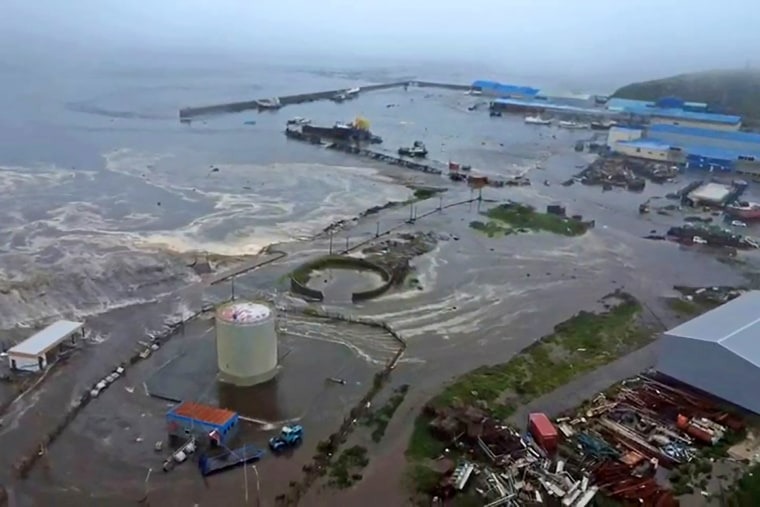Anchorage, Alaska – A major undersea earthquake occurred early this morning off the southern coast of Alaska, prompting tsunami alerts and widespread evacuation efforts across multiple coastal communities. The earthquake, which the U.S. Geological Survey (USGS) measured at a magnitude of 8.2, struck at approximately 2:30 a.m. local time, sparking immediate concern for residents and emergency authorities alike.

Earthquake Details Confirmed by USGS
According to the USGS, the epicenter of the earthquake was located about 56 miles (91 kilometers) southeast of Perryville, Alaska, at a depth of approximately 29 miles (46 kilometers) beneath the ocean floor. The quake was classified as a megathrust earthquake, a type of seismic activity commonly associated with significant tsunamigenic potential due to the sudden displacement of tectonic plates along subduction zones.
Shortly after the initial quake, several aftershocks were recorded, including a 6.1 magnitude tremor within the same seismic region. The frequency and magnitude of these aftershocks have contributed to the extended tsunami advisory issued across Alaska’s southern coastal zones.
Immediate Tsunami Warnings Issued
In response to the earthquake, the National Tsunami Warning Center (NTWC) quickly issued a tsunami warning for large portions of coastal Alaska, including Kodiak Island, Homer, Sand Point, and Chignik Bay. The warning urged residents in low-lying areas to evacuate immediately to higher ground, emphasizing the potential danger of incoming waves generated by the undersea disturbance.
The National Weather Service (NWS) confirmed the appearance of tsunami waves within 90 minutes of the earthquake, with some waves estimated to have reached heights of up to 20 feet in certain coastal zones. While the highest impact was observed in sparsely populated areas, authorities remain on high alert as wave surges and aftershocks continue.

Damage Reports and Emergency Response
As of this writing, no fatalities have been officially reported. However, state and local authorities have confirmed reports of injuries, flooded infrastructure, and property damage in affected towns such as Kodiak and Sand Point. Preliminary assessments indicate that several docks and small vessels were damaged or swept away due to the force of the tsunami waves.
Emergency management teams, including personnel from the Alaska Division of Homeland Security and Emergency Management (DHSEM), are actively coordinating with local governments to assist in evacuation efforts, provide shelter support, and assess the structural impact of both the quake and the tsunami waves. Search and rescue teams have been deployed to remote areas where communication has been disrupted.
Authorities are urging residents to stay away from the coastline until official all-clear signals are issued. Travel in certain coastal areas has been temporarily restricted to ensure public safety and facilitate emergency operations.
Public Safety and Evacuation Orders
Local governments activated sirens and emergency broadcast systems immediately following the tsunami warning. In cities such as Anchorage and Kodiak, emergency personnel went door-to-door urging people to evacuate and head toward designated tsunami evacuation zones.
Public shelters were opened in multiple towns to accommodate displaced residents. The American Red Cross and other humanitarian organizations have mobilized volunteers and resources to provide food, water, and temporary housing for those affected.
Alaska Governor Mike Dunleavy issued a public statement confirming that all relevant state resources have been activated to respond to the crisis. The governor’s office is also in close communication with FEMA and federal agencies for additional support as needed.

National and Regional Monitoring Efforts
The Pacific Tsunami Warning Center (PTWC) continues to monitor sea-level changes across the Pacific Ocean. As of now, no tsunami alerts have been issued for the U.S. West Coast, Hawaii, or other Pacific nations. However, advisories remain in place for certain offshore areas as a precaution while wave patterns are being analyzed.
Experts from the National Oceanic and Atmospheric Administration (NOAA) are working in coordination with USGS scientists to track potential aftershocks and evaluate the earthquake’s geological implications.
The U.S. Coast Guard has also deployed aerial reconnaissance flights to assess coastal damage and assist in maritime rescue operations. Ports in high-alert zones have been temporarily closed pending structural inspections and safety evaluations.

Earthquake Preparedness in Alaska
Alaska, located along the seismically active Pacific Ring of Fire, is no stranger to powerful earthquakes. The state experiences thousands of tremors annually, though most are minor and not felt by residents. However, large-scale events such as the 1964 Great Alaska Earthquake, which measured 9.2 in magnitude, have shaped the region’s earthquake preparedness and infrastructure planning.
Today’s 8.2 magnitude quake ranks among the most powerful earthquakes recorded in the state in recent years. It serves as a reminder of the ongoing need for seismic readiness, public education, and robust emergency response protocols.
Official Statements and Warnings
Residents in tsunami-prone areas are advised to:
-
Remain away from beaches, rivers, and harbors until all warnings are lifted.
-
Monitor updates from official sources such as the National Weather Service, USGS, and state emergency offices.
-
Follow local evacuation orders and road closures.
-
Keep emergency supplies on hand and ensure family members are accounted for.
For accurate and real-time alerts, individuals are encouraged to subscribe to the Wireless Emergency Alert (WEA) system and local emergency notification services.
Ongoing Assessment and Updates
Emergency services and geological experts continue to assess the full impact of the earthquake and tsunami. As recovery efforts begin, additional updates are expected in the coming hours and days.
While the region has so far avoided mass casualties, the financial and structural toll could be significant. Federal and state disaster declarations may follow pending further evaluations.
The situation remains fluid, and residents are urged to maintain caution, stay informed through official channels, and offer support to those affected.
Conclusion
The 8.2 magnitude undersea earthquake that struck southern Alaska today has triggered a large-scale emergency response across coastal communities. While tsunami waves caused flooding and infrastructure damage, quick evacuations and early warning systems have so far helped mitigate loss of life.
Authorities continue to monitor for aftershocks and additional waves while coordinating recovery efforts. This event underscores the critical importance of seismic preparedness and rapid-response systems in high-risk regions such as Alaska.
For the latest updates, residents should rely on trusted sources such as the USGS, NWS, and local emergency management agencies.

